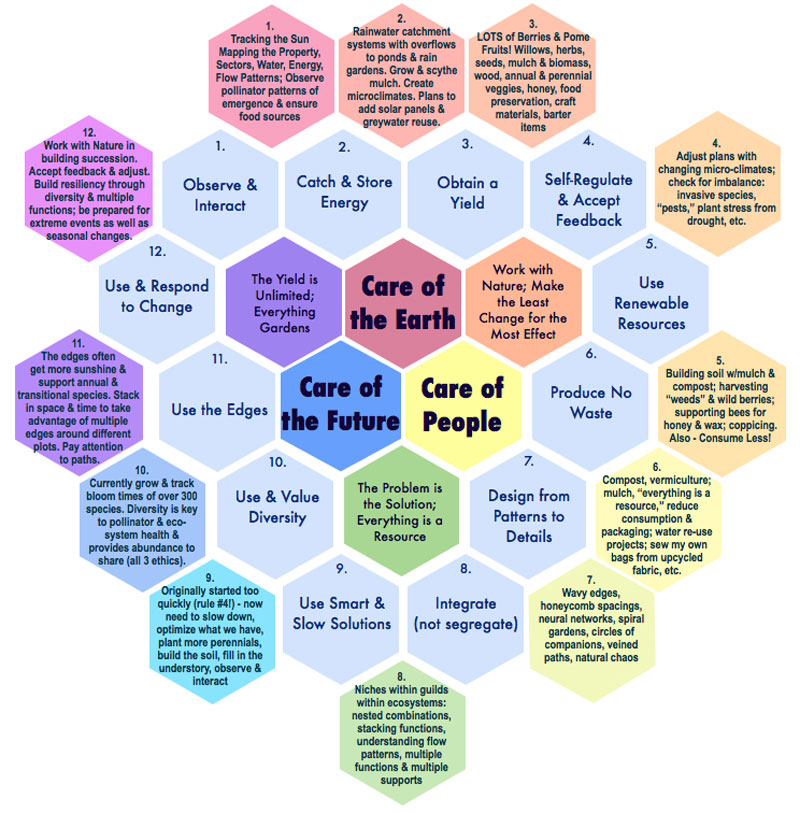At its most basic level, our prime directive and the only ethical decision, in the words of Bill Mollison, is “to take responsibility for own existence and that of our children.” From that, everything else follows.
Within that realm, we still need a path forward. Building a self-sustaining ecosystem is a daunting task, particularly one that allows us to live in harmony with our planet while still providing for our needs. Mollison provides guidelines with three key ethics: Care of the Earth, Care of People, and Setting Limits to Population and Consumption, which is, essentially, Care of the Future.
To illustrate this concept, and because our project has a strong focus on creating sustainable habitat not only for ourselves, but also for pollinators, we drew a honeycomb configuration, one of the strongest architectural structures known, and placed these three ethics in primary colors at the center. Attached to this core in secondary colors are 5 additional principles, again, from Mollison’s “Permaculture: A Designers’ Manual” (p. 35) (combined for the graphic into three):
- Work with nature, rather than against…so that we assist rather than impede natural developments.
- The problem is the solution; everything works both ways. Everything is a positive resource.
- Make the least change for the greatest possible effect.
- The yield of a system is theoretically unlimited.
- Everything gardens, or has an effect on its environment.
Building on Mollison’s core, we placed David Holmgren’s 12 principles (in light blue), which strongly correlate with Mollison’s concepts and are widely used in permaculture design (from “Permaculture: Principles and Pathways Beyond Sustainability“).
And finally, from this central framework, we identified corresponding features and activities (in tertiary colors) at the Barbolian Fields homestead.
